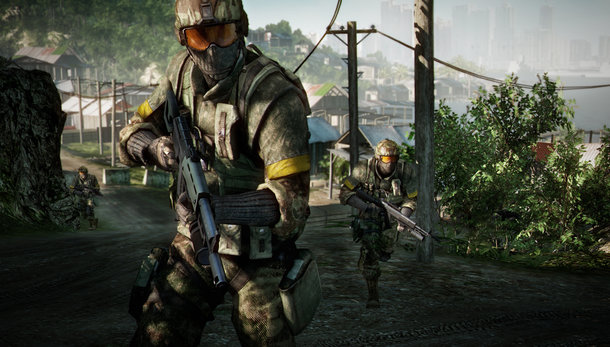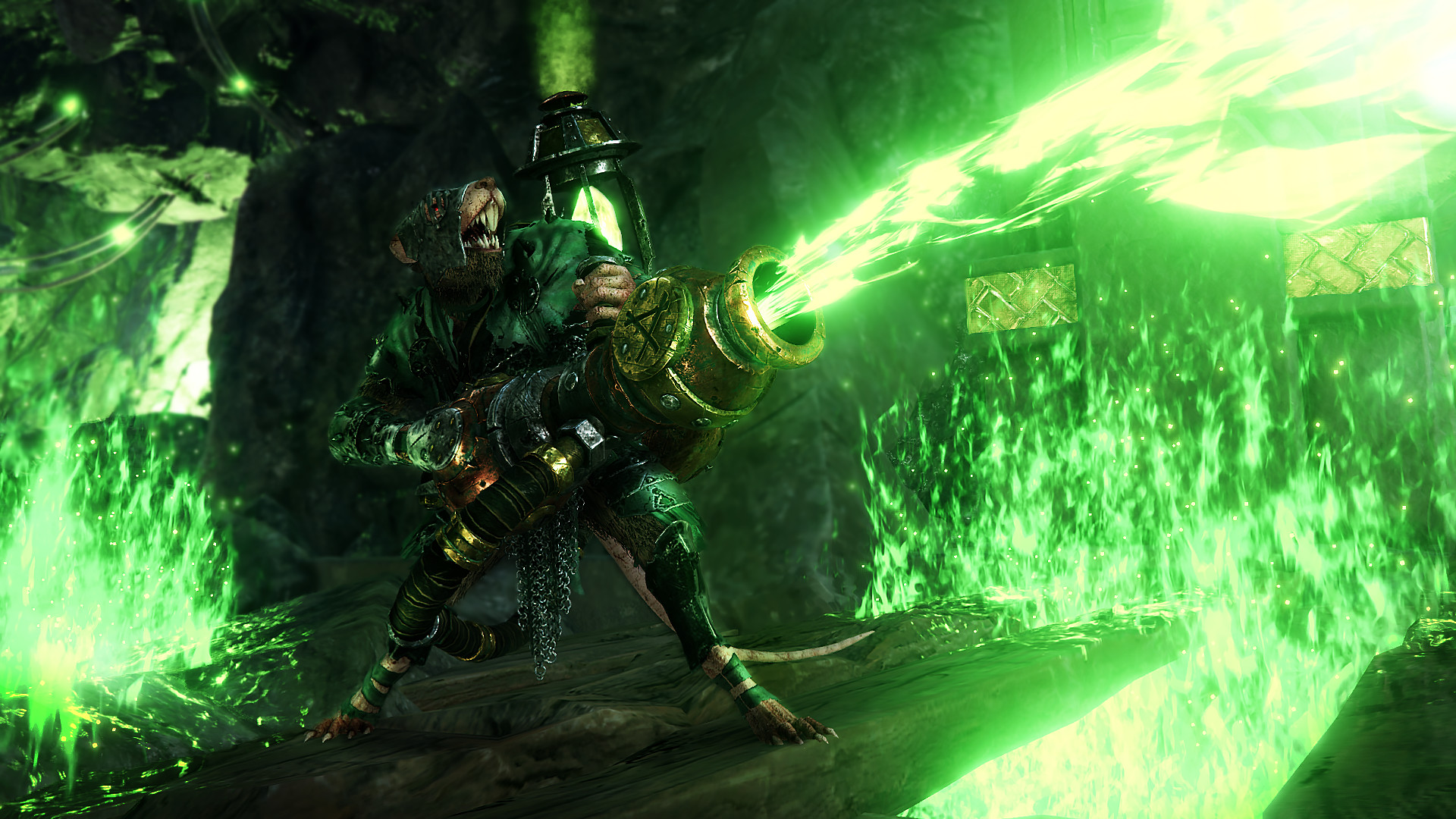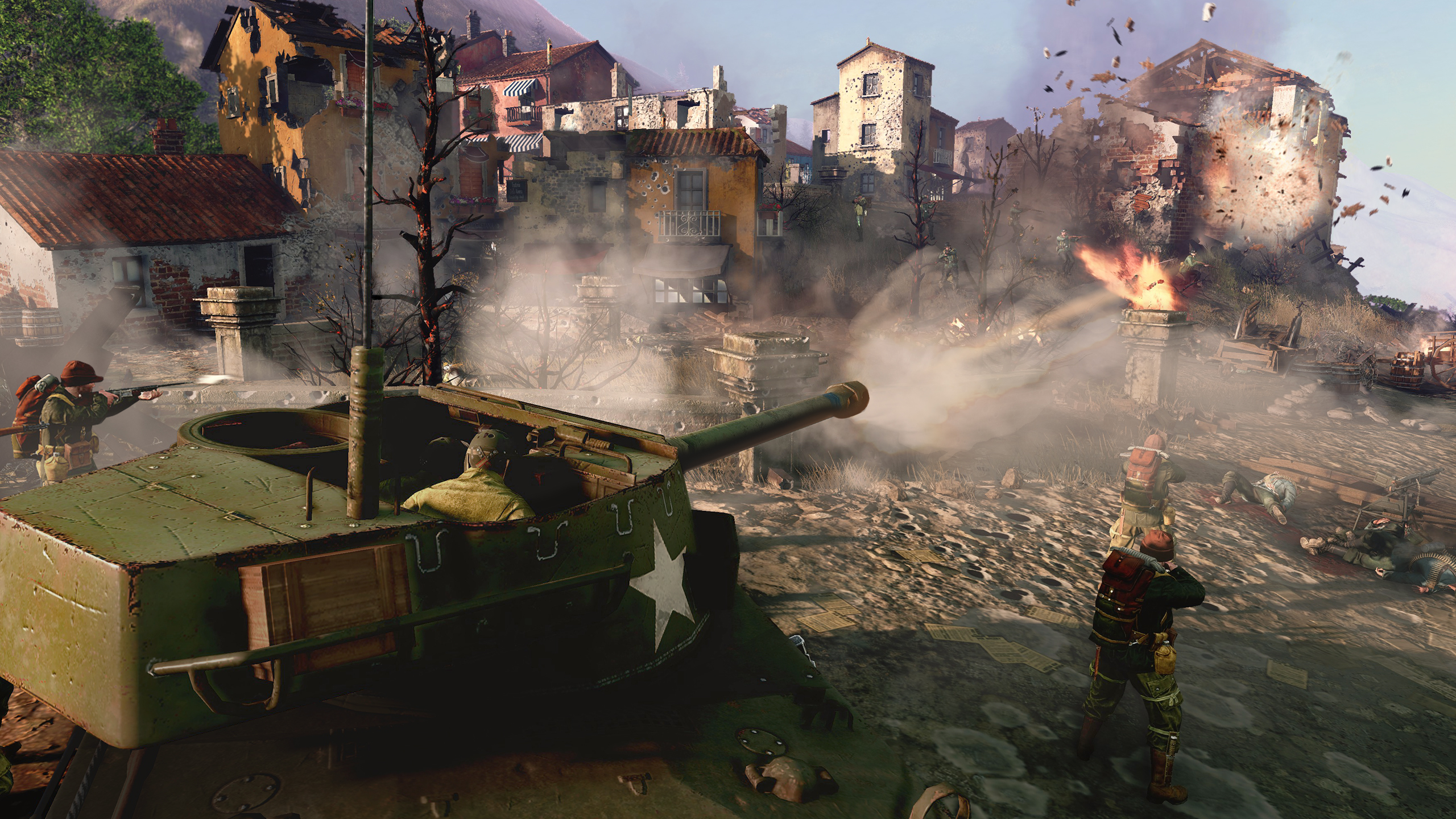It was meant to be the most simple part of my mission: get from A to B so I could start using the hefty metal scanner attached to the top of my truck to search for resources. A mere two minutes into this challenge and my truck was upside down, the engine was knackered and I was using every curse in my vocabulary. This is off-roading life.
The MudRunner series, of which Expeditions is an exploration-based spin-off, has always placed great importance on the journey itself. A mission might come with its own discrete set of complications and challenges, but simply traversing the bumpy, sodden, muddy terrain is often the greatest trial—as evidenced by the fact that I have spent a not inconsiderable amount of time the wrong way up, stuck in a river and sinking into bogs.
(Image credit: Focus Entertainment)
Getting stuck is very much part of the core experience, but it’s usually just a temporary setback. If there’s a tree nearby, for instance, you can connect it to your vehicle with a winch and use it to pull yourself out of your embarrassing situation, whether you’re the wrong way up or just needing to get up a hill that’s too steep and slippery.
The shift from being part of a trucking company that hauls hefty cargo to being part of a scientific research team also means you get a lot of new gadgets. Particularly useful for reckless drivers like me are the jackscrew that lets you flip over upside down vehicles and reusable anchors that let you use your winch even when there aren’t any trees around.
Some items are a bit more high-tech. I found the echo sounder particularly handy, as it shows you how deep the water is when you’re trying to ford a river or swamp. If water gets into your vehicle it can cause damage, and it’s easy to get stuck when you’re out of your depth, so this wee toy is invaluable. The drone, meanwhile, emphasises scouting ahead, letting you take to the skies to sneak a peek at upcoming obstacles.
(Image credit: Focus Entertainment)
Even with a vehicle full of gizmos, though, there’s a lot of trial and error involved as you go to war with Expeditions’ rugged terrain. When my truck was flipped over for the first time, I attached the winch to a tree on a cliff above me, dragging my vehicle into a vertical position, leaving it part of the way up a cliff before I got stuck again. Detaching the winch sent me plummeting back to the ground, where I once again landed upside down. More swearing ensued. But also plenty of laughter.
If you keep your foot on the pedal and keep spinning the steering wheel, maybe you’ll free yourself from this prison of mud and rocks.
Despite the series spitting out several games, becoming imprisoned by mud remains a delight as you watch it deform and spray up, coating your once pristine truck. As someone who doesn’t drive, this is as close as I can get to the trials and tribulations of forcing a 4X4 through a bog. It makes me slightly jealous of real offroaders. There’s just something wonderful and primal about trying to defeat nature as you attempt to drop off some supplies to a bunch of mud-free scientists.
Sometimes you just need to persevere. If you keep your foot on the pedal and keep spinning the steering wheel, maybe you’ll free yourself from this prison of mud and rocks. These moments transport me back to road trips with my family, where my dad would stubbornly refuse to turn around even if we were lost or about to get stuck. Most of the time it wouldn’t pay off, but when it did, well I’ve never seen anyone look so satisfied to not learn any lessons.
(Image credit: Focus Entertainment)
Free-roam isn’t unlocked for Expeditions’ trio of maps—Little Colorado, Arizona, Carpathians—until you’ve completed their titular expeditions, but each foray into the wilderness will still see you exploring an open world full of optional objectives with endless opportunities to explore, as you chart your own course to the waypoints. There’s a nice balance here, letting you prepare for each mission by selecting your gear, cargo and vehicle before being sent off to complete clear objectives, and then once you’re in the actual expedition you’re free to tackle it however you want.
At first, each map is an enigmatic frontier where you have no idea what challenges face you, but by striking out and exploring them you’re essentially filling in these maps with safe routes, places you can ford and locations where you can use your winch. By solving these terrain and physics-based puzzles, you’re making things easier for yourself on your next journey. Next time, you’ll know you need to change tire pressure here, or that you’ll be screwed if you try to ford the river in this spot.
(Image credit: Focus Entertainment)
Completing missions nets you cash you can spend on upgrading your vehicles, and your garage will fill up with new trucks and 4X4s with different specialties. You’ll also be able to spend some of that cash on hiring flesh and blood humans, who’ll join the research team. These new friends come with bonuses, so you can take less water damage, or the effectiveness of your gadgets is improved. I’m a fan of the largely pointless biographies that they come with, too. I don’t need to know that my logistics expert used to be a complete horndog and was once a pilot, but it’s good to know who you’re working with.
The change in focus from hauling cargo to exploring really appeals to me, but it doesn’t seem like anything has been lost in the switch. You’re still trying to force hefty vehicles through unforgiving wildernesses, and you’ll still be making deliveries and embarking on familiar activities like rescuing stranded vehicles, towing them out of rivers and mud. There’s just a greater emphasis on exploring even more untamed maps. It feels more additive than completely transformative, which feels right for a formula that’s proven to be so compelling.










